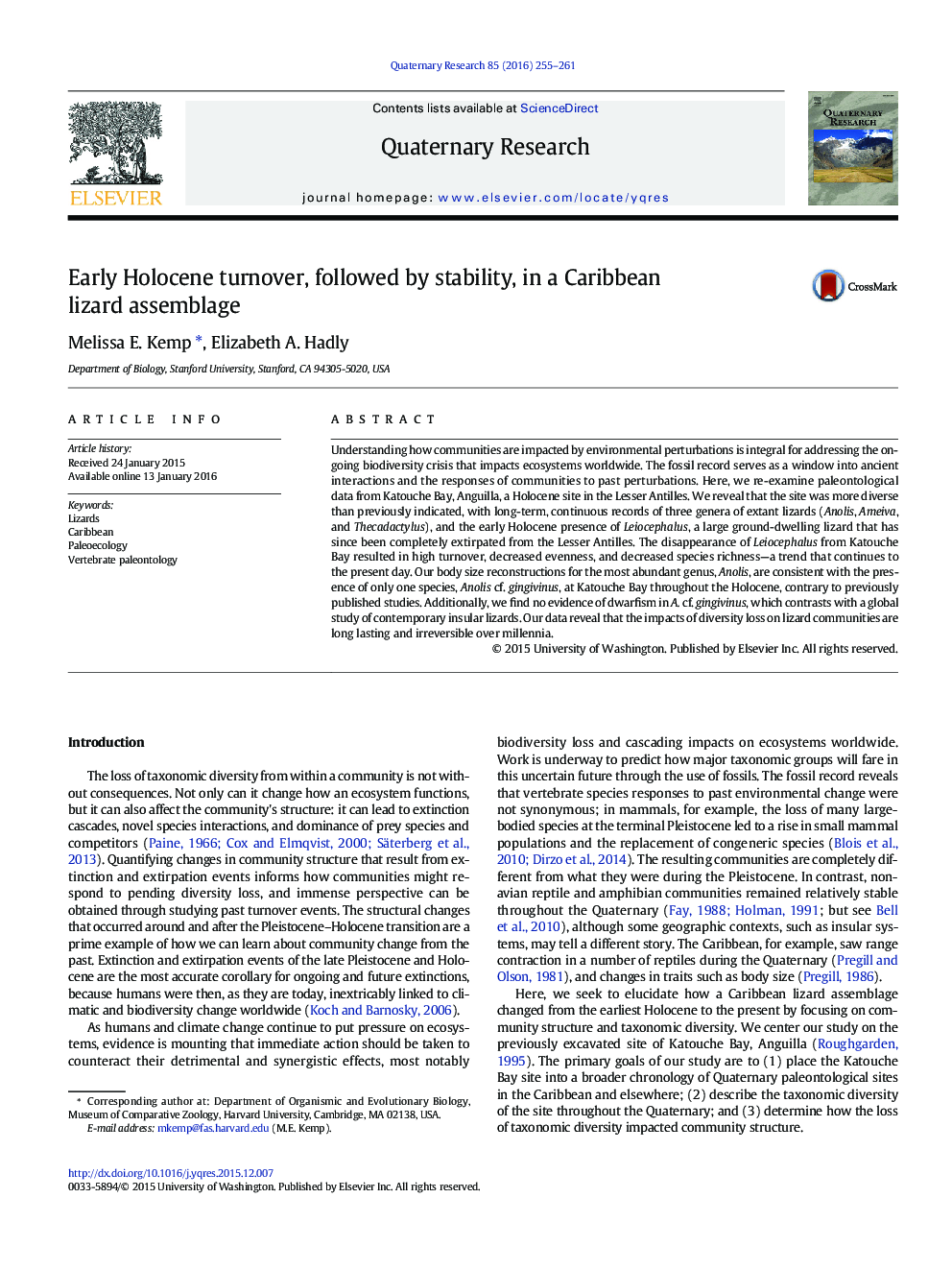| Article ID | Journal | Published Year | Pages | File Type |
|---|---|---|---|---|
| 1045062 | Quaternary Research | 2016 | 7 Pages |
Understanding how communities are impacted by environmental perturbations is integral for addressing the ongoing biodiversity crisis that impacts ecosystems worldwide. The fossil record serves as a window into ancient interactions and the responses of communities to past perturbations. Here, we re-examine paleontological data from Katouche Bay, Anguilla, a Holocene site in the Lesser Antilles. We reveal that the site was more diverse than previously indicated, with long-term, continuous records of three genera of extant lizards (Anolis, Ameiva, and Thecadactylus), and the early Holocene presence of Leiocephalus, a large ground-dwelling lizard that has since been completely extirpated from the Lesser Antilles. The disappearance of Leiocephalus from Katouche Bay resulted in high turnover, decreased evenness, and decreased species richness—a trend that continues to the present day. Our body size reconstructions for the most abundant genus, Anolis, are consistent with the presence of only one species, Anolis cf. gingivinus, at Katouche Bay throughout the Holocene, contrary to previously published studies. Additionally, we find no evidence of dwarfism in A. cf. gingivinus, which contrasts with a global study of contemporary insular lizards. Our data reveal that the impacts of diversity loss on lizard communities are long lasting and irreversible over millennia.
